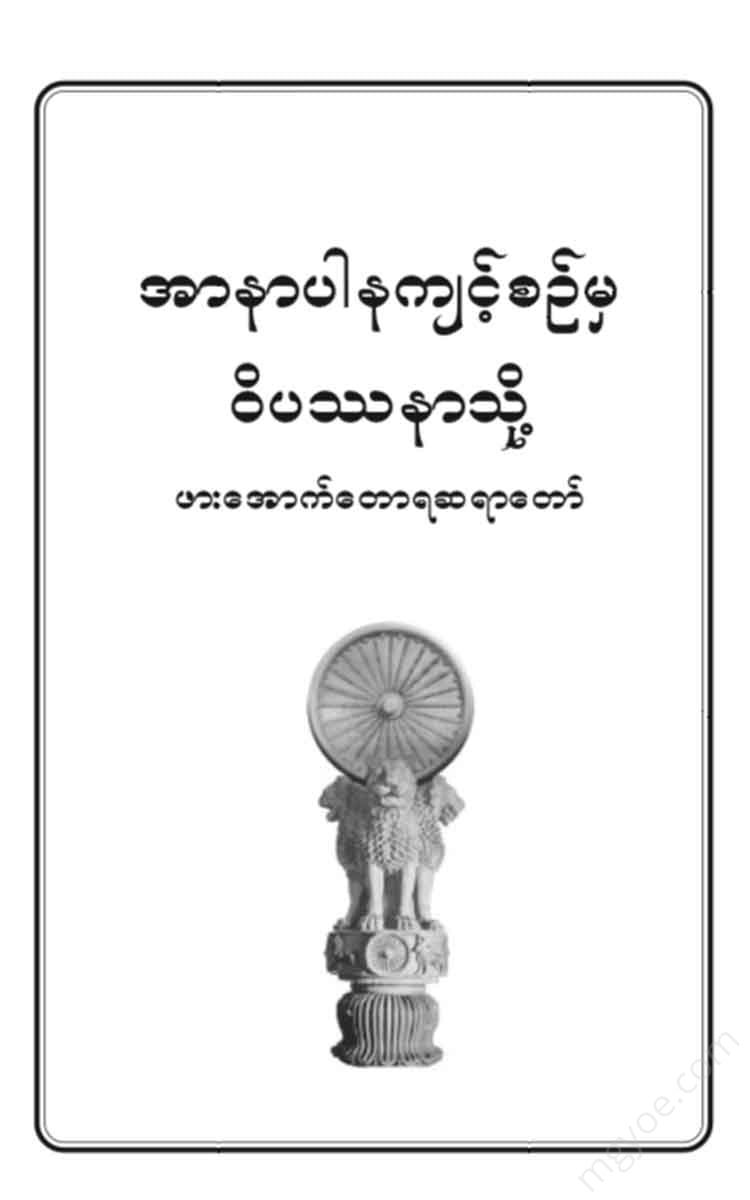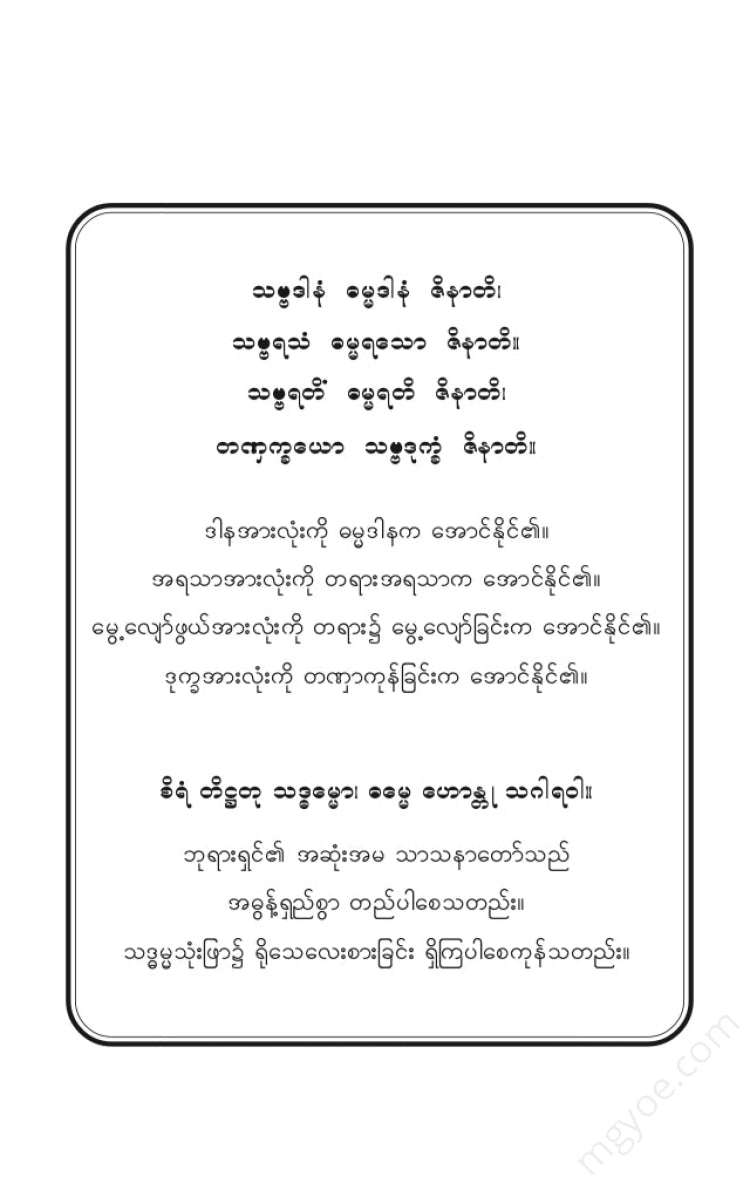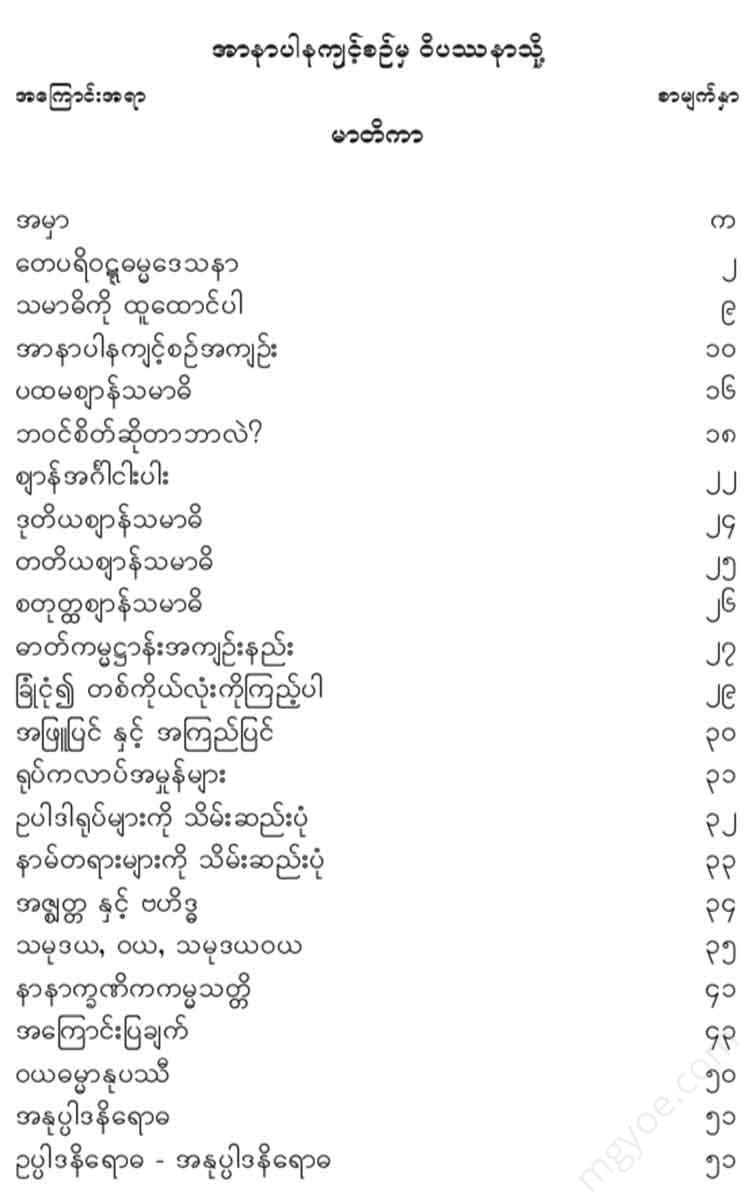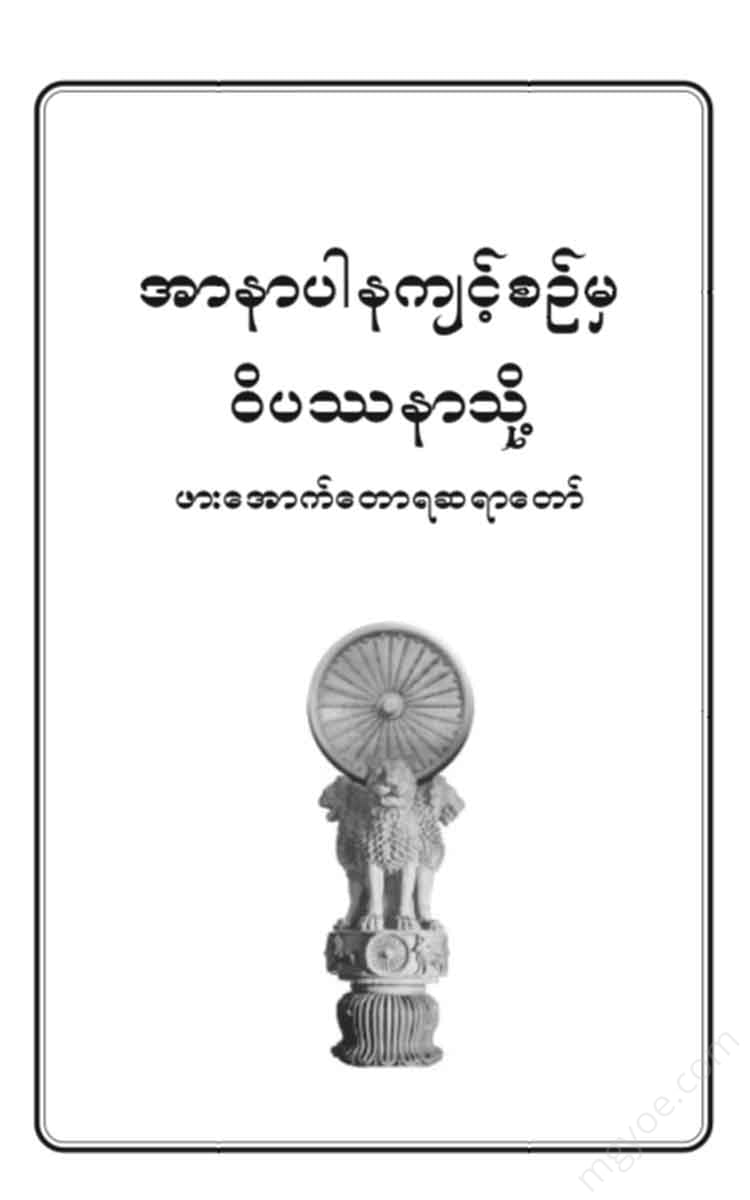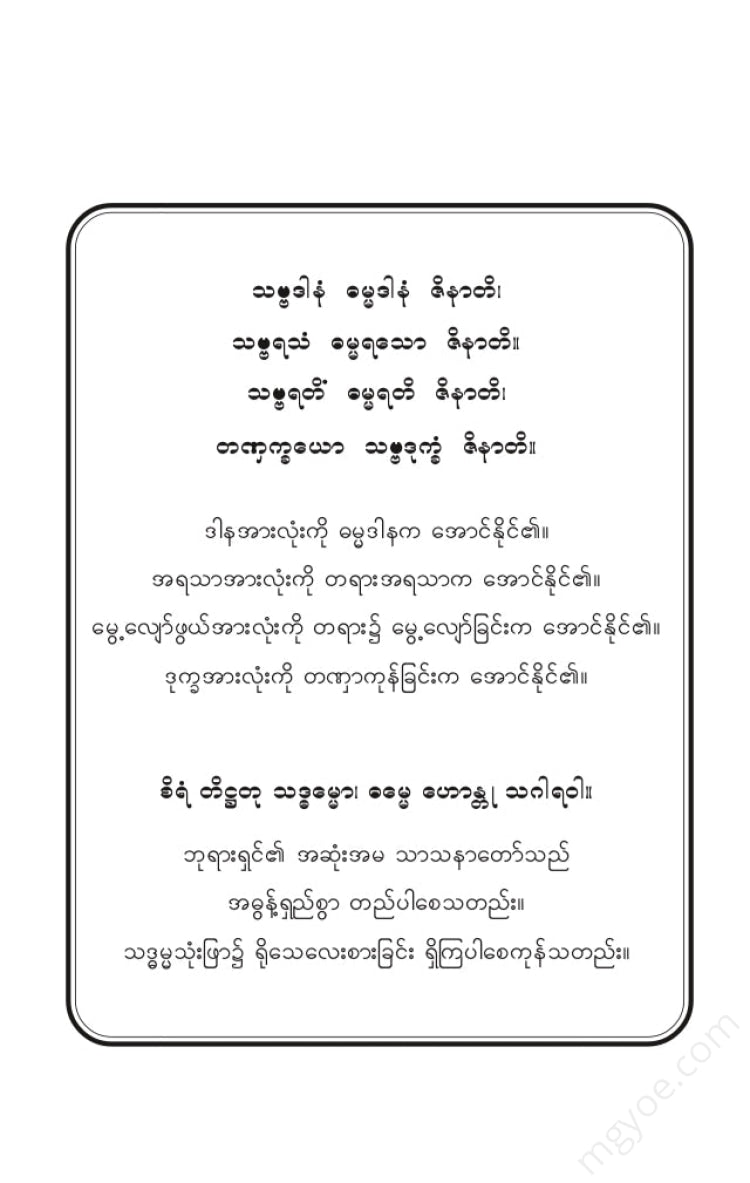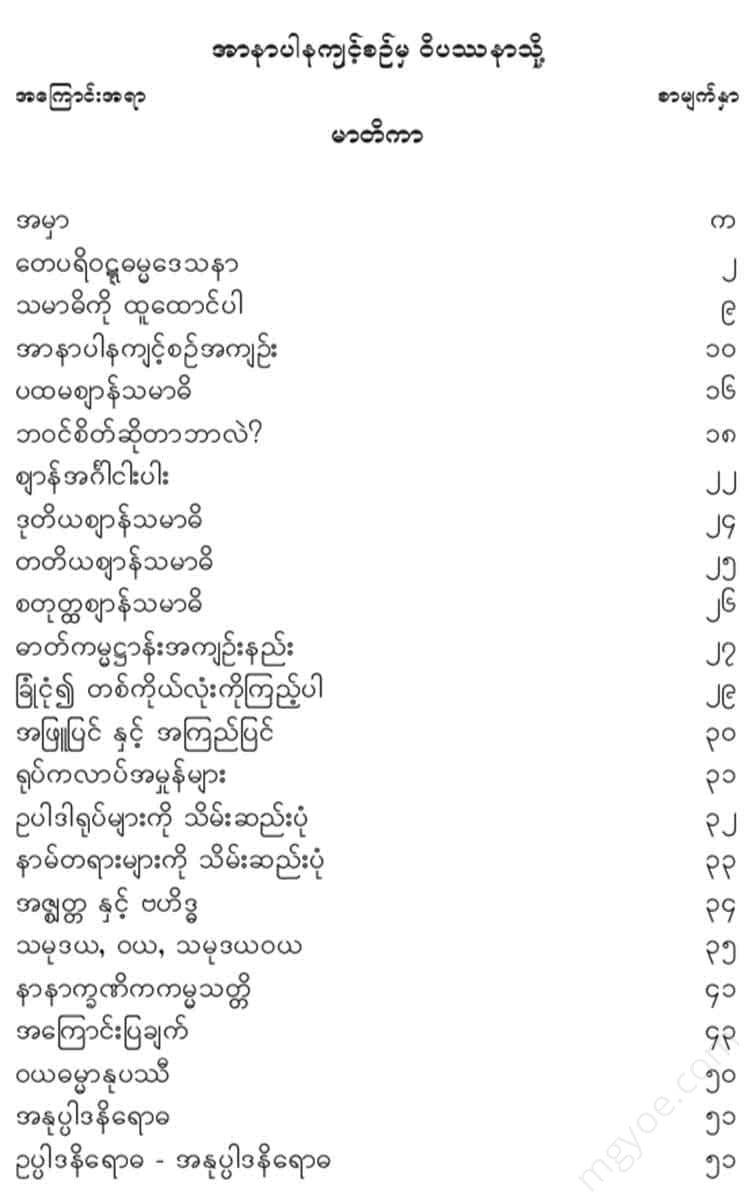Other Websites
Venerable Phor Aok Tora - From Anapana to Vipassana
Venerable Phor Aok Tora - From Anapana to Vipassana
Couldn't load pickup availability
Namo Tassa Bhagavad Gita Arhat Gita Samsambuddha Gita
Now is the time to draw a painting. What if you were able to draw this painting skillfully? Very beautiful figures will appear at one time, but if you go to a painting without skill and draw it blindly, a very ugly painting will appear.
However, if the blind, blind, and ignorant man had drawn it, whether he was skilled or unskilled, whether he was cunning or stupid, whether he was blind or stupid , whether he was beautiful or ugly, what would be the power of the Supreme Truth to analyze this painting that he could create? There are only five bodies: form , feeling , perception , mental formations , and consciousness. What is the nature of the power that can create it ? - Five bodies. He can create only these five bodies, why ? - The life of this blind man is a life that is firmly tied to the five bodies with the rope of desire. He also has a big rope called vision hanging around his neck. His life is a life of clinging to the five aggregates of material existence, clinging to the idea that I am, I am mine, I am my self. He has not yet reached this point. He has not yet penetrated the realm of form and name to the Supreme. Since he does not know, he does not have the eye of supreme wisdom. If he can create, what can he create ? He can only create the five aggregates. He can only create kamma to create the five aggregates. What are the nature of these five aggregates ? The Buddha has now turned to the Vipassana section, and tonight he intends to briefly discuss the Vipassana section.
The Parivata Dhamma Sermon
The Buddha said, "The form is eternal and impermanent. The impermanent is the source of suffering. The source of suffering
Bhikkhus , beloved sons and daughters.... That is the question I will ask you. Your beloved sons and daughters. What do you think? Form and form. Is it eternal or eternal? Is it eternal or eternal? Thus you ask. Venerable.... Eternal = Eternal, true, true. Thus you have made your golden ears hear.
Dear monks... Whether it is an expert painter or an unskilled painter, when examining a painting, there are only five elements, form, feeling, perception, and consciousness. Since there are only these five elements, I will ask you, my dear monks, a question: Is this form eternal or impermanent ? He asked. When asked this question, how do the monks answer ? They answered, "Immpermanent." And then,
The path of suffering is the path of happiness. The path of suffering is the path of happiness.
He asked, "Is this impermanent form suffering or happiness?" When asked, the answer was suffering.
The suffering of the world is the cause of suffering, the cause
(San-2-124.) Yama • What kind of form is there? Immortality • Immortality is there. [Why? Immortality , arising and passing away. ] Suffering - Suffering is there. Why? Suffering is there because we are constantly being tormented by the punishment of arising and passing away.
Yama = the nature of matter. Anisam = the nature of impermanence. Suffering • Suffering alone. Viparināma dappam • The nature of impermanence that is subject to decay.
How is it corrupted? After it has been created, it has no power to remain solid and unbroken, and it is always in a state of flux from the tī period to the bin period, which will eventually be destroyed. This is translated as the nature of the viparīnama dharma, which is corruptible and perishable, and is corrupted by age and death. Therefore -
Yama = What form. Anisa - only the form. Suffering • Suffering. Viparināmamadhappam • Only the corruptible, perishable, and perishable form. Ta • That form that is eternal, suffering, and non-perishable. Eta - This form. Mama • My form. Esa - This form. Ahamāsmīn I am. Esa - This form. May - I am. Attati - The self. Samānupassitōn - To think and contemplate. Kappīnu - Is it appropriate?
The Buddha asked, "Is it right for you, my beloved sons and daughters, to contemplate and think in this way, 'This form is my form , this form is me, this form is my self?'" At that time, the monks replied, "No, it is not right, Buddha." The Buddha also asked in the same way about the phenomena of feeling , perception , mental formations, and consciousness.
We are asking and answering questions about death, suffering , and emptiness. When we ask the same questions, the monks answer in the same way. So the question and answer about the five aggregates is complete.
Looking at this question and answer, the monks understood that they knew the five aggregates called form, feeling , perception , mental formations, and consciousness, and they also knew the nature of impermanence , suffering , and emptiness of these five aggregates. Then the Buddha instructed them to continue their practice of insight meditation. How did he instruct them ?
The first Bhikkhu, the form of the Kili, the form of the Atitānagata, the form of the Na
(Sam-2-124.) Bhikkhus = Beloved monks .... Tasma - Therefore. Iha - Within this noble Dhamma. Tumma • Your beloved sons and your beloved daughters. Atitānagatapitsuppanna - Past, future, present. Yama kinci rupam = All forms and all things.
Past form, present form , future form , how many of those forms are there ? Is the whole of the material form, the whole of the physical form, one form ? No, there are twenty-eight past forms, twenty-eight types - well, the number of each type is incalculable, all (28) past forms , all (28) future forms, all (28) present forms. So -
Atitānagatapitsuppannam - Past, future, present. Yama kili rupam - All physical phenomena, and ajjattam va - Also in the inner self. Bahiddha va • Also in the external and external worlds. Yama kiṇṣi rupam = All physical phenomena.
There are (28) types of physical forms, (28) types of external forms. This is not a distinction between men and women. If we were to say it separately, there are (27) types for women in physical forms and (27) types for men. In general, there is only one type of physical form. In external forms, there are no distinctions between men and women, and since there can be two types of physical forms, there are only (28) types of physical forms. So how many types of physical forms are there ? In the yama ki, it is said that the physical form is the whole of the physical form, and all forms are called.
Olarikamva - The rough and the rough. Sukkhumamva • The subtle and the subtle. Yamki Rupam • All forms and all forms.
Sakkhupasada = eye perception, Sotapasada = ear perception , Yanasada = nose perception , Jiwapasada = tongue perception , Kayapasada = body perception, the five forms of perception .
Visual perception, grammar, gaṇṭhāra, raṭhāra, phoṭhāra (phoṭhāra is the pathāvī tejā vāyā) - when combined, there are (7) sensory forms, | When combined with (5) visual forms and (7) sensory forms, there are (12) forms. These (12) forms are easily perceived and visible because they are evident in the consciousness of the observing yogi. Therefore, they are called olārika forms. How many olārika forms are there? ( 12)
The remaining forms of the 28 forms are called the sukhumā forms. So, whether it is the olārika form or the sukhumā form, the Buddha is instructing us to contemplate all forms, all forms, including the yam, kinci, and rupam, here.
Hina Va - The inferior is also the one. Panita Va - The noble is also the one. Yam Ki Rupam • All forms are also.
Whether it is a bad form or a good form, the forms that are the result of unwholesome deeds are bad , the forms that are the result of wholesome deeds are good, etc. If we divide this bad form into levels and realms, the forms of depraved beings are lower in level than the forms of blissful beings , they are bad, blissful beings are good, and if we divide the blissful beings into levels, they become bad and good, so it means all the forms in the (31) realms.
Hina Va = The base is also the base. Panita Va - The noble is also the base. Yama Kiñci Rupam • All the material things, and Surya Va • The base is also far from the mind. Santike
Va - which is also close to consciousness. Yam kiṇṣa rupaṃ = all forms. Atthi - exists.
What two types are there when you add them together? ( 11) types.
Past form, present form , future form , non-existent form , external form , the harsh form called olārika , the subtle form called sukhumā, the vile form called hīna , the noble form called pāṇita, the form that is far from the consciousness of the person contemplating the yoga, called dūra , the form that is close to the consciousness of the person contemplating the yoga, called sāntika , the harsh form called olārika - what two types are there when combined ? ( 11) types. What should we do with these (11) types of forms that exist in such (11) conditions?
Sabvamrupam = This whole form. Eta = These (11) forms. Nama = Not my form. Esa is these (11) forms. Na ahama is not me. Esa is these (11) forms. Na me attati - Not my self. Evam - Thus. Eta = All the forms that exist through these (11) conditions. Yathabhuta - Not broken or reborn. Samminsanyaya = Form, form, form, name
The Buddha listed the forms as the object of insight knowledge. What are the two types? ( 11) types. Consider these (11) forms as follows: The sun is not my form , the moon is not my body, the body is not my soul , and the body is not my self. According to the eight chapters of the Sandavada Sutta, “I am not immortal.”
